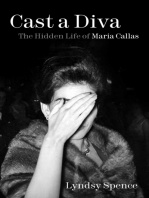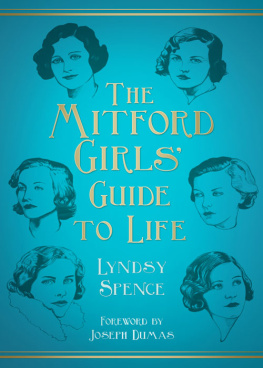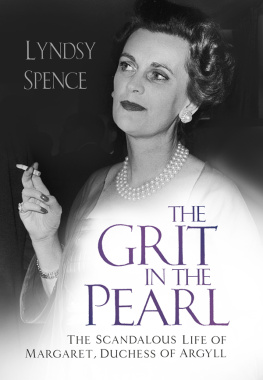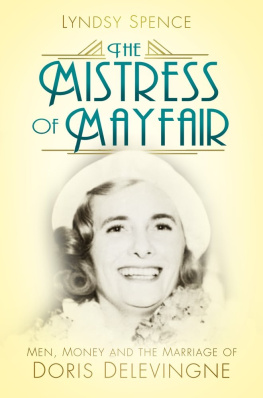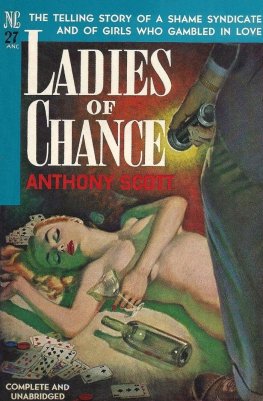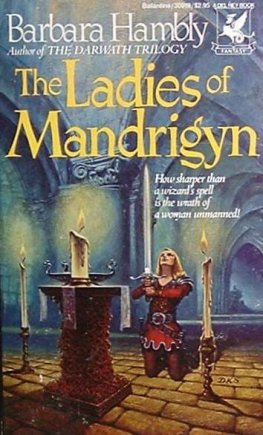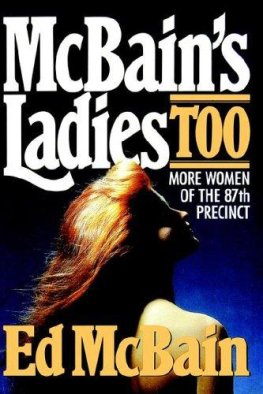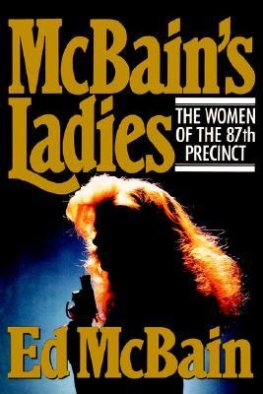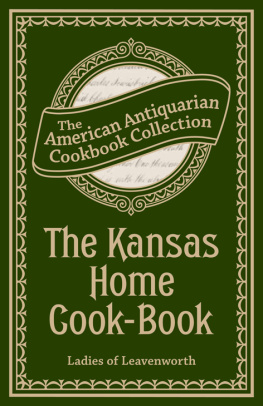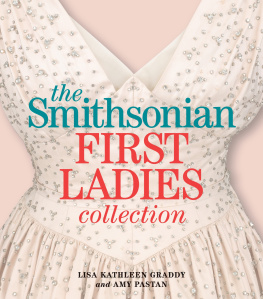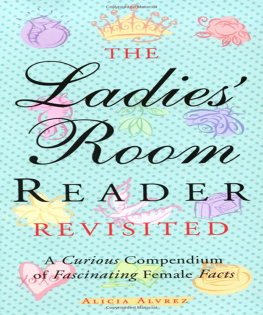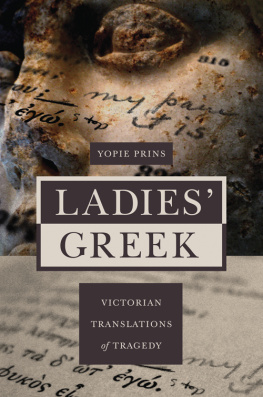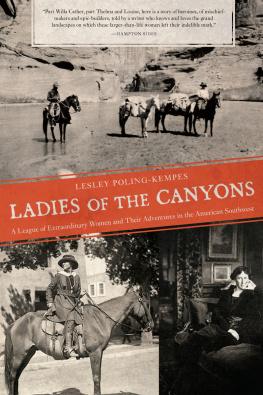Contents
Guide
SHE WHO DARES
SHE WHO DARES
TEN TRAILBLAZING
SOCIETY WOMEN
LYNDSY SPENCE

For Lola, Harriet, Mariga, and Henrietta
First published in 2019
The History Press
The Mill, Brimscombe Port
Stroud, Gloucestershire, GL5 2QG
www.thehistorypress.co.uk
Lyndsy Spence, 2019
The right of Lyndsy Spence to be identified as the Author of this work has been asserted in accordance with the Copyright, Designs and Patents Act 1988.
All rights reserved. No part of this book may be reprinted or reproduced or utilised in any form or by any electronic, mechanical or other means, now known or hereafter invented, including photocopying and recording, or in any information storage or retrieval system, without the permission in writing from the Publishers.
British Library Cataloguing in Publication Data.
A catalogue record for this book is available from the British Library.
ISBN 978 0 7509 9170 4
Typesetting and origination by The History Press
Printed and bound in Great Britain by TJ International Ltd
eBook converted by Geethik Technologies
CONTENTS
ACKNOWLEDGEMENTS
I am grateful to the following individuals: Patrick Guinness for granting me permission to quote from Mariga Guinnesss letters and diaries, to reproduce his photographs, and for answering my questions; Marina Guinness for sharing her amusing anecdote of Mariga; Lord Gowrie for his telephone interview; Josephine Batterham of the Derek Hill Foundation for permitting me to view Marigas letters to Derek Hill; Lord and Lady Massereene for their permission to quote from Jean Massereenes letters; Julia Shirley for her generosity in sharing information on Mariga and for interviewing her mother, Rose Bryson, on my behalf; Isabel Boyle and Doris Morrow for their memories of Mariga during her years in Glenarm; Kathy Crozier and Claire Mann for a most enjoyable day at Castletown House and Conolly Folly; Aidan OBoyle for his knowledge of Irish architecture and for assisting with source material; Benjamin Treuhaft for an enjoyable afternoon discussing Sydney Redesdale; John Hayden Hasley for his memories of Sylvia Ashley; Libby Cameron for answering my questions about Enid Lindeman; William Cross for sharing his collection of rare books; Andrew Budgell for his helpful editorial comments; Mark Spence and Yasmin Morgan for their many excursions in search of Mariga and co.; Stephen Kennedy for accompanying me on research trips to Dublin Castle, Mountjoy Square and Glasnevin Cemetery; my family for encouraging my (hare-brained) projects.
I am especially grateful to Lord Gowrie for his permission to reproduce Derek Hills portrait of Mariga Guinness, to the Bryson and Huxley families for making available their personal photographs of Mariga Guinness, and to Len Kinley and John Young for permission to use their archived photographs of the Massereene family.
I thank the following archivists for their help in accessing files and assisting with copyright permissions: Andrew Glew, the Tate Archive; Richard Ward, the Parliamentary Archives; Oliver House, the Bodleian Library University of Oxford; Georgia Satchel, the Mull Museum; Lesley Park, the Cumbria Archive Centre; Morx Arai, Huntington Library; Philip Magennis, Antrim Castle Gardens; Rebecca Geddess, Public Records Office Northern Ireland.
AUTHORS NOTE
The original title of this book, These Great Ladies, was inspired by Evelyn Waughs appraisal of his society friends. For, in October 1931, the stage adaptation of his bestselling novel Vile Bodies opened at the Arts Club Theatre and caused a socialites revolt. Many thought his satirical portrait, drawn from high society, struck too close to home. Lady Irene Curzon considered him a silly little creature
Without harbouring Waughs venomous bite, I consider the ten women who feature in this book to be great ladies. They were true individuals and held a unique place in society between the world wars and thereafter. Many have fallen into obscurity but their stories deserve to be told.
1
PRINCESS, PRESERVATIONIST:
MARIGA GUINNESS
The extremities of Marigas life, the abandonment she felt from both parents and the memories of a lonely childhood, inspired in her a resilience against the modern world. She was born Princess Hermione Marie-Gabrielle von Urach in London on 21 September 1932, to Rosemary (ne Blackadder), of Scots and Norwegian descent, and Prince Albrecht von Urach, a descendant of the German House of Wrttemberg the same family as Mary of Teck, the Consort of King George V. She is much more German than my Great-Aunt Elisabeth, Queen Mother of the Belgians, Mariga said of her cousin, Queen Mary. Related to every royal house in Europe, Marigas pedigree was older than the House of Windsor: her grandfather, Prince Wilhem of Urach was briefly King Mindaugas II of Lithuania; her great-grandmother, Princess Florestine, was the daughter of Florestan I, Prince of Monaco; and amongst her reigning aunts and uncles was Elisabeth Sissi, the Empress of Austria. Years later, Mariga attended a dinner party and a guest spoke of Sissi and her alleged affair with King Ludwig. Mariga replied, They were just cousins. The guest challenged her response, claiming that neither he nor Mariga could be certain. I have it on good authority, she told him. She did not confide that Sissi and Ludwig were amongst her regal ancestors. But, then again, her upbringing was a world away from her noble birthright.
The fate of Marigas paternal family was significantly altered after the Mongasque Revolution of 1910, followed by a constitution in 1911 which Albert I, Prince of Monaco, suspended during the First World War, for her father had once stood to inherit the principality from his cousin and Alberts heir, Prince Louis II, had no legitimate children. However after the First World War, France wanted a pro-French monarch to inherit the Monegasque throne, and so Louis adopted his illegitimate daughter, Charlotte, and she became his successor. In 1930 an American newspaper reported that Albrecht had gone to Paris to persuade the French Foreign Office of his right as the legitimate heir of Louis, but he was unsuccessful. The visit was not entirely hopeless, for he met Rosemary at the German Embassy in Paris, and despite being two years her junior and engaged to a Spanish aristocrat, he proposed marriage and she accepted. A royal title did not equal wealth, and the couple had to work for a living. Albrecht painted, and his first exhibition was financed by his mother and was a commercial failure, for it coincided with the Great Depression. Rosemary was a journalist and cartoonist: she created a childrens cartoon in The Sketch, designed advertisements for Shell, and in 1925 became the editor of the short-lived Parade magazine. She also contributed to the Saturday Review, the Evening Standard, and was engaged by the Manchester Daily Express to interview interesting people such as Feodor Chaliapin, whose answers consisted of sex and violence, and so could not be printed.
After Mariga was born, Rosemary and Albrecht continued their nomadic existence. She was not expected to live, owing to an infection she caught at birth, and having recovered two months later she considered November her real birthday. We dont show the baby to strangers,
During those early years the family lived in Venice, in a flat rented from Anna Mahler, as Albrecht hoped to establish himself as an artist; he counted Pablo Picasso as a close friend, and he sketched a portrait of Adolf Hitler, but it was declined because Hitler thought the staring eyes made him look mad.


